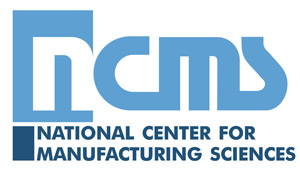Audit Readiness Tool Enhances Software with Embedded AI
 As the tax filing deadline approaches, audits are the last thing many people want to discuss. Yet audits—in the broadest sense, not just tax-related—are beneficial for all organizations seeking to improve operations and achieve strategic objectives.
As the tax filing deadline approaches, audits are the last thing many people want to discuss. Yet audits—in the broadest sense, not just tax-related—are beneficial for all organizations seeking to improve operations and achieve strategic objectives.
A current CTMA project, Enhanced Audit Software Readiness Tool, brings together industry partner Ricardo Defense with the US Army Tank-Automotive & Armaments Command (TACOM). The team is using the Army’s Audit Readiness Tool (ART) as a surrogate to evaluate a repeatable and tailorable process audit readiness tool. The overall goal is to develop an enhanced software tool that will significantly increase readiness functions while reducing manpower and organizational maintenance/sustainment support costs. Such a tool can be utilized across commercial entities, the Army, and multiple DOD organizations to develop an effective method for tracking and following up on audit findings and agreed-upon actions by management.
While the format of internal and external audit reports varies by entity, all organizations need an approach that effectively communicates key issues and resolves those issues. Audits help an organization accomplish its objectives by bringing a systematic, disciplined approach to evaluate and improve the effectiveness of risk management, control, and governance processes.
This project is establishing a framework for initiating and executing an internal audit, processing and responding to internal audit findings, and preparing for and executing an external audit. The framework includes a scalable set of checklists, process flows, and templates that can be tailored to the size, scope, and complexity of the audit in question.
“This project focused on standardizing business processes that have a financial impact, providing accessibility of process documentation to the TACOM/Security Assistance Management Directorate (SAMD), and improving Department of Defense (DOD) readiness,” said Ahan Hunter, a Program Analyst for SAMD who contributed audit support for the project.
The team evaluated organizational internal business processes and controls to identify system deficiencies and provide solutions. In particular, the project centered on updating the General Fund Enterprise Business System (GFEBS), the Army’s cloud-based financial, asset, and accounting management system.
“We had many different working groups and IPT sessions,” said Hunter. “We identified a lot of risk mitigation. For example, one of the sub-processes we developed ensures that purchasers can’t be approvers because then that creates improprieties within the system. We created a workflow in which a person cannot approve their own inputs; they have to get a different approver.”
The team updated the GFEBS software by implementing internal organizational controls to prevent errors and comply with applicable laws and Army regulations. The use of embedded Artificial Intelligence (AI) will help with risk mitigation by combing through a huge volume of financial data to identify anomalies and flag them for scrutiny by a human auditor.
Additionally, the team created a dashboard pathway for senior management that enables continuous monitoring of data, providing real-time total financial and asset visibility. This dashboard will help leadership assess internal controls, promote best practices, ensure regulatory compliance, reduce costs, and lower the need for external auditing. It also identifies operational inefficiencies and time waste in the different IT systems, enabling leadership to address cross-functional issues. With trusted and reliable audit tools, management will be able to evaluate “what is,” paving the way for “what if” scenarios that can help to streamline business and maintenance operations, leading to substantially greater efficiencies and effectiveness.
“We also created a SharePoint repository for new personnel who join the team,” said Hunter. “With this repository, nobody will have to start over from scratch.”
The team is currently producing a report on best practices and standard operating procedures that can be used, in both public and private sectors, to integrate audit processes and software. This report will be especially useful for large, expanding, multi-faceted organizations with a global reach.
This project provides powerful tools to access more comprehensive financial information, which can be used to advance overall organizational efficiency and strategic program effectiveness in both public and private-sector organizations. With this upgraded financial intelligence, leadership will have the flexibility to adapt as business requirements change, which will facilitate more effective funding allocation.
Furthermore, the project’s dashboard pathway can help leadership gain visibility on all aspects of their organization, which would also be beneficial for many commercial operations. It could provide quick access to better data—such as accounting transactions for financial reporting—which could assist with rapid decision-making.
Overall, the improved financial information that could be delivered can facilitate compliance, business system upgrades, fraud reduction, and better organizational planning, which would lead to increased customer, employee, and corporate confidence.
“This project is ultimately about supporting a culture of audit success,” said Hunter.
